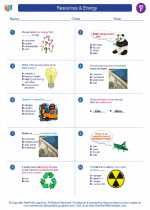Art - An Overview
Art is a diverse range of human activities and the products of those activities. It includes visual arts, where the final product is a painting, drawing, sculpture, or other visual media. It also encompasses performing arts, such as music, dance, and theater. Art is a form of expression that allows individuals to communicate ideas, emotions, and experiences. It can be both a reflection of the culture and society in which it was created, as well as a means of shaping and influencing that culture and society.
Types of Art
There are several types of art, each with its own unique characteristics and history:
- Visual Arts: This category includes painting, drawing, sculpture, printmaking, and photography, among others.
- Performing Arts: Performing arts encompass music, dance, theater, and film. These art forms are experienced through live performances or recorded media.
- Literary Arts: Literature, poetry, and storytelling are forms of art that rely on written or spoken language to convey meaning and evoke emotions.
- Decorative Arts: Decorative arts include crafts, ceramics, textiles, and design, focusing on both aesthetic and functional objects.
Important Art Movements
Throughout history, art has undergone various movements and styles that reflect the cultural, social, and political contexts of their time. Some of the important art movements include:
- Renaissance: A period of renewed interest in art, science, and culture, characterized by realistic depictions of the human form and perspective in painting.
- Impressionism: This movement emphasized the use of light and color to capture the fleeting impressions of a scene, rather than precise details.
- Modernism: Modernist artists sought to break away from traditional forms and explore new ways of representing the world, often through abstraction and experimentation.
- Pop Art: Pop artists drew inspiration from popular and commercial culture, incorporating mass media imagery and consumer products into their works.
Studying Art
Studying art involves exploring its history, techniques, and impact on society. To gain a deeper understanding of art, students can engage in the following activities:
- Study famous artworks and artists from different periods and cultures.
- Learn about various art techniques, such as oil painting, sculpture, or digital art.
- Visit art museums and galleries to experience art firsthand and understand its cultural significance.
- Participate in art classes or workshops to develop practical skills and creativity.
- Explore the connections between art and other disciplines, such as history, psychology, and sociology.
By engaging with art in these ways, students can develop a well-rounded appreciation for its significance and relevance in the world.
.◂Social Studies Worksheets and Study Guides Sixth Grade. Resources & Energy

 Worksheet/Answer key
Worksheet/Answer key
 Worksheet/Answer key
Worksheet/Answer key
 Worksheet/Answer key
Worksheet/Answer key
